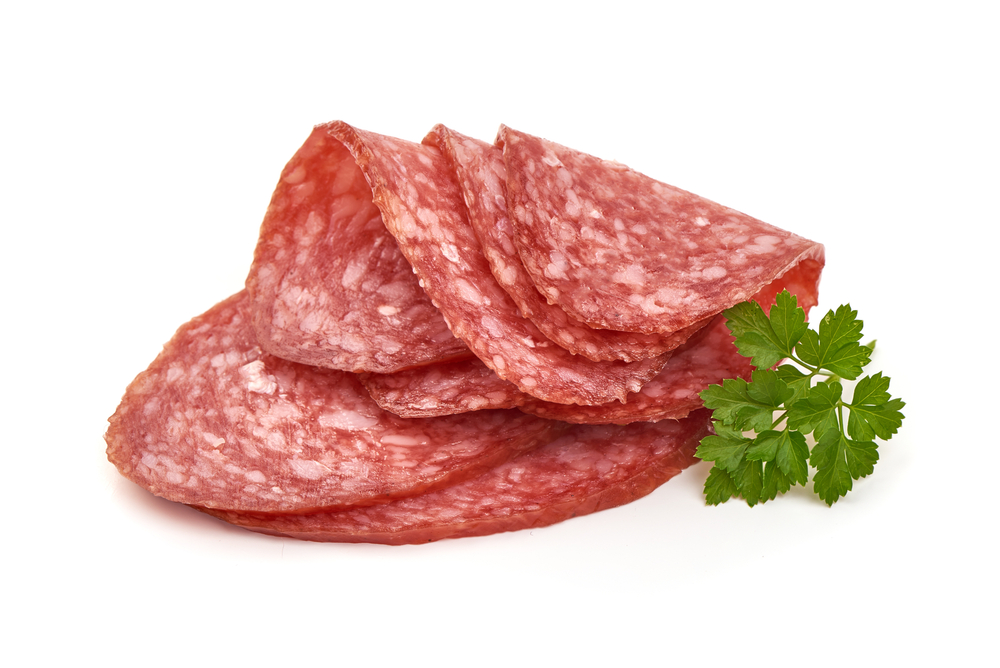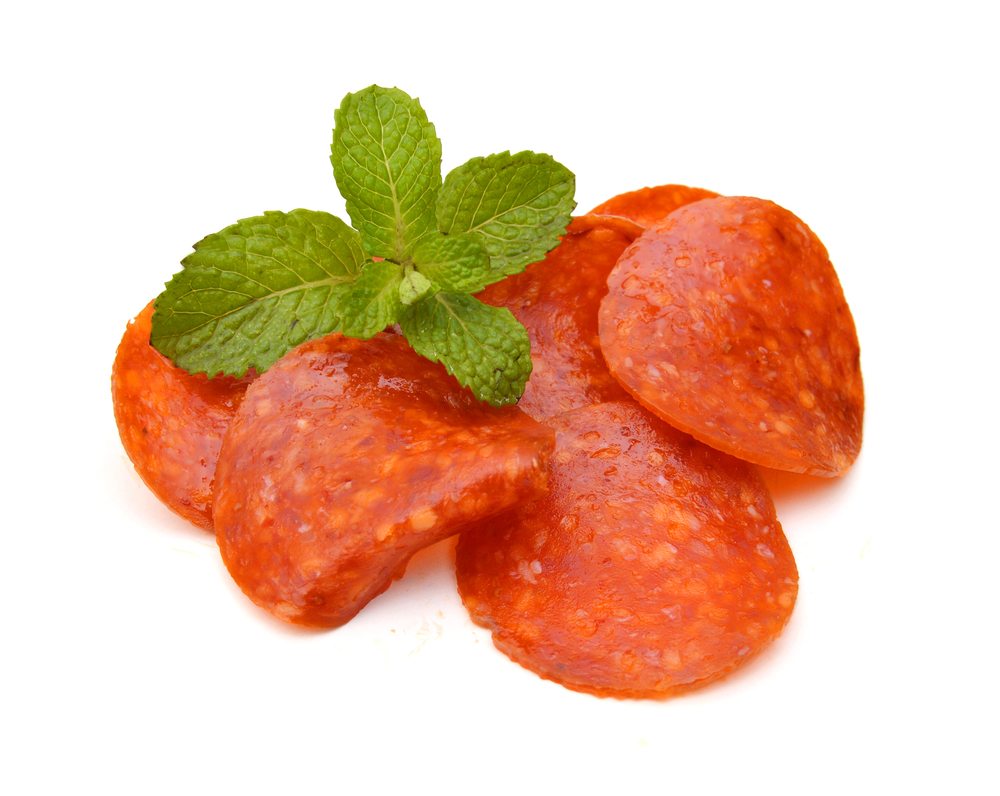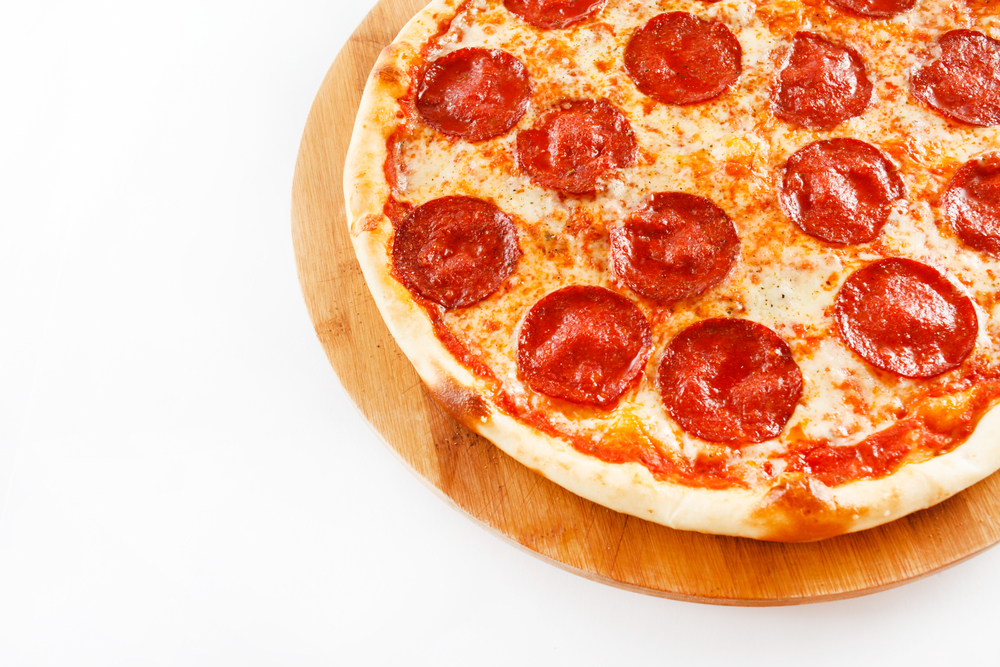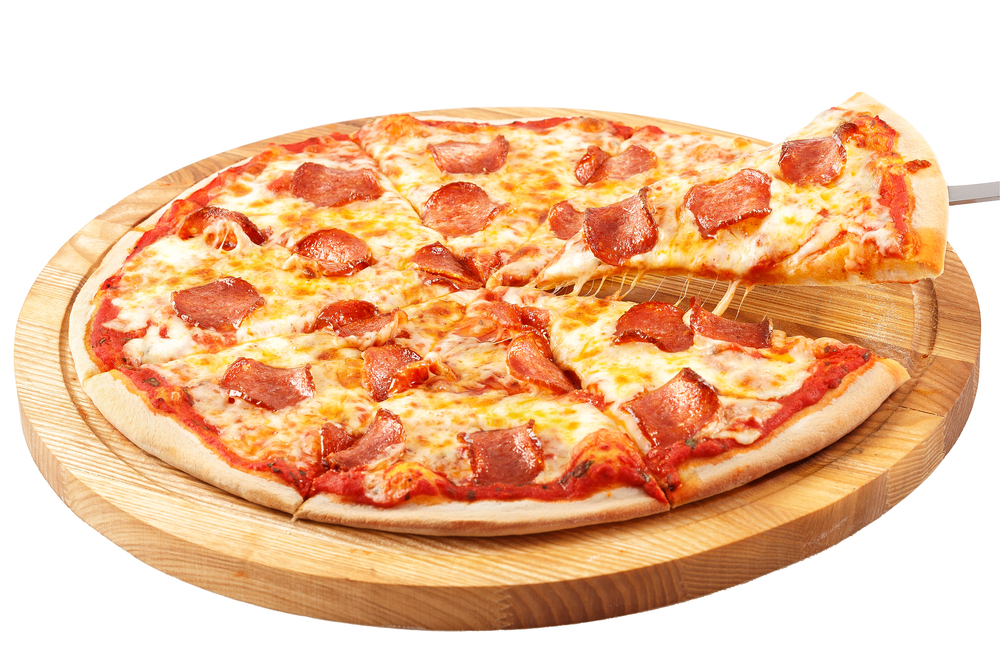Salami and pepperoni are two of the most well-known and often consumed types of cured meats. Although they may have similar looks and flavor characteristics, there are some significant variations between the two that are interesting to consider.

It’s crucial to remember that pepperoni is actually a variety of salami. Not all salamis, though, are pepperonis.
The key distinction between the two is that salami can be prepared with a range of meats, including beef, pork, and even game meats like venison or elk, whereas pepperoni is normally produced with a combination of beef and pork.
In addition, pepperoni typically has a more peppery flavor than salami and is usually hotter.
The texture of the two is another distinction. Salami typically has a chunkier texture, but pepperoni typically has a finer grind.
This makes pepperoni a popular choice for pizza toppings, where it can be applied uniformly across the crust.
Salami, on the other hand, has a heartier texture that makes it more adaptable and may be used in a range of meals, both hot and cold.
Overall, despite their first similarities, salami and pepperoni differ in a few key ways that should be taken into account when deciding which to use in your next recipe.
Whether you favor salami’s heartier, more adaptable texture or pepperoni’s hotter, smokier flavor, both of these cured meats are delicious.
Salami and Pepperoni: What’s the Difference?
When it comes to cured meats, salami and pepperoni are two of the most popular options. While they may look similar, there are several key differences between the two.

We will explore the differences between salami and pepperoni, including their ingredients, curing processes, and flavor profiles.
Ingredients
Salami and pepperoni share some common ingredients, such as salt, sugar, and spices. However, there are some key differences in the meats used to make these sausages.
Salami is typically made from pork, but it can also be made from beef or a combination of the two. Some salamis also include other meats, such as venison or wild boar.
In addition to meat, salami also contains fat, which helps to give it its characteristic flavor and texture.
Pepperoni, on the other hand, is typically made from a combination of beef and pork. It is often seasoned with paprika, which gives it its distinctive red color and spicy flavor.
Curing Process
Both salami and pepperoni are cured meats, which means they are preserved using salt and other ingredients. However, the curing process for each sausage is slightly different.
Salami is typically fermented, which means it is left to cure in a warm, humid environment for several weeks.
During this time, bacteria in the meat break down the sugars and proteins, giving the sausage its characteristic tangy flavor.
Pepperoni, on the other hand, is not fermented. Instead, it is cured using a combination of salt and sodium nitrate, which helps to preserve the meat and prevent the growth of harmful bacteria.
Flavor Profiles
Salami and pepperoni have distinct flavor profiles that set them apart from each other. Salami is known for its rich, complex flavor, which comes from the combination of meat, fat, and spices.
Depending on the type of salami, it may have a mild, sweet flavor or a more robust, spicy flavor.
Pepperoni, on the other hand, is known for its spicy, smoky flavor. The paprika used to season the sausage gives it a distinctive red color and a slightly sweet, smoky flavor.
Pepperoni is also typically thinner and softer than salami, which makes it a popular topping for pizza.
In conclusion, while salami and pepperoni may look similar, there are several key differences between the two.
Salami is typically made from pork and is fermented for several weeks, while pepperoni is made from a combination of beef and pork and is cured using salt and sodium nitrate.
Salami has a rich, complex flavor, while pepperoni is known for its spicy, smoky taste.
Salami vs Pepperoni on Pizza
When it comes to pizza toppings, salami and pepperoni are two of the most popular choices. While they may look similar, there are some key differences between the two that can affect the overall flavor and texture of your pizza.

Texture
One of the main differences between salami and pepperoni is their texture. Salami is typically made from ground meat that is mixed with spices and then cured.
It has a softer texture than pepperoni, which is usually made from a combination of beef and pork and has a firmer texture.
If you prefer a softer, more tender texture, then salami might be the better choice for you. However, if you enjoy a bit of chewiness to your pizza toppings, then pepperoni might be the way to go.
Spiciness
Another key difference between salami and pepperoni is their level of spiciness. Salami is typically milder in flavor, with a more herbal taste that comes from the various spices used in the curing process.
Pepperoni, on the other hand, is known for its spicy kick, thanks to the addition of paprika and other hot peppers.
If you like a little heat in your pizza, then pepperoni is the way to go. But if you prefer a more subtle flavor, then salami might be the better choice.
Flavor Pairings
When it comes to pairing salami and pepperoni with other pizza toppings, there are a few things to keep in mind.
Salami pairs well with other milder flavors, such as mushrooms, olives, and artichoke hearts. It also goes well with a variety of cheeses, including mozzarella, gouda, and provolone.
Pepperoni, on the other hand, pairs well with spicier toppings, such as jalapenos, banana peppers, and red pepper flakes. It also goes well with stronger cheeses, such as cheddar and parmesan.
Overall, the choice between salami and pepperoni comes down to personal preference. Both toppings offer their own unique flavor and texture, and both can be used to create delicious pizzas.
Whether you prefer a softer, more herbal flavor or a spicy kick, there is a salami or pepperoni out there that is perfect for your next pizza creation.
Health Considerations
When it comes to choosing between salami and pepperoni, it’s important to consider their health impact. In this section, we’ll discuss the fat content, sodium and nitrate content, and cancer risks associated with these cured meats.

Fat Content
Both salami and pepperoni are high in fat, with pepperoni containing slightly more fat than salami. However, not all fats are created equal.
Salami contains more monounsaturated fats, which are considered to be heart-healthy, than pepperoni.
On the other hand, pepperoni contains more saturated fats, which can raise cholesterol levels and increase the risk of heart disease.
Sodium and Nitrate Content
Both salami and pepperoni are high in sodium, which can increase blood pressure and increase the risk of heart disease.
Salami is also typically cured with nitrates, which can form nitrosamines when consumed. Nitrosamines are known carcinogens and have been linked to an increased risk of cancer.
It’s important to note that not all salami and pepperoni contain nitrates. Look for brands that use natural curing methods or that are nitrate-free if you’re concerned about the potential health risks.
Cancer Risks
As mentioned above, the nitrates in cured meats like salami and pepperoni can form nitrosamines, which are known carcinogens.
In addition, the high-fat content of these meats can also contribute to an increased risk of cancer.
While it’s important to limit your consumption of cured meats, it’s also important to remember that moderation is key.
Enjoying salami or pepperoni in small amounts as part of a balanced diet is unlikely to have a significant impact on your health.
However, if you’re concerned about the potential health risks, consider opting for leaner meats or plant-based alternatives.
Cultural Significance
Salami and pepperoni are both popular cured meats enjoyed around the world, but they each have their own cultural significance.

Let’s explore the role that salami and pepperoni play in Italian, Spanish, and American cuisine.
Italian Cuisine
Salami is a staple in Italian cuisine and has been enjoyed for centuries. It is often served as an antipasto or appetizer, and can also be used as a pizza topping or in pasta dishes.
There are many different types of salami in Italy, each with its own unique flavor profile and texture. Some popular varieties include Genoa salami, soppressata, and finocchiona.
Spanish Cuisine
In Spain, cured meats are a way of life. Chorizo, a type of sausage made from pork, is perhaps the most well-known Spanish-cured meat.
However, salami is also popular in Spain and is often served alongside other cured meats like jamón ibérico. Spanish salami, or salchichón, is typically made with pork and seasoned with paprika and garlic.
American Cuisine
Pepperoni is perhaps the most well-known American cured meat. It is a type of salami that is made with beef and pork and is seasoned with paprika, garlic, and other spices.
Pepperoni is most commonly used as a pizza topping, but it can also be used in sandwiches and other dishes.
Pepperoni, American cuisine also features other types of salami, including hard salami and summer sausage.
Salami and pepperoni are both important and beloved cured meats in their respective cultures.
Whether you are enjoying a slice of salami in Italy, a plate of chorizo in Spain, or a pepperoni pizza in America, these cured meats are a testament to the rich culinary traditions of their respective countries.
Conclusion
After exploring the similarities and differences between salami and pepperoni, we can conclude that these two cured meats have distinct characteristics that make them unique.
Salami is known for its milder taste, chunkier texture, and use of garlic and paprika for seasoning.
It is a versatile meat that can be used in cold and hot dishes, making it a great addition to any charcuterie board or sandwich.
On the other hand, pepperoni is spicier, has a finer texture, and is often used as a topping for pizza.
It is lightly smoky and has a distinct flavor that makes it a favorite among many pizza lovers.
When it comes to nutritional content, both salami and pepperoni are high in sodium and calories.
However, salami contains less saturated fat and more nutrients like zinc, phosphorus, and vitamin B3.
Ultimately, the choice between salami and pepperoni comes down to personal preference and the dish you are preparing.
Whether you prefer the milder taste of salami or the spicier kick of pepperoni, both types of meat can add delicious flavor to any meal.







Add comment